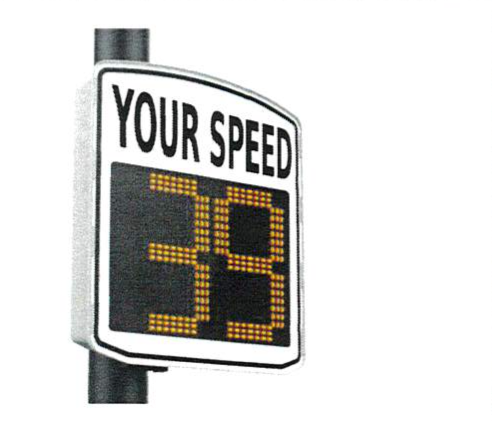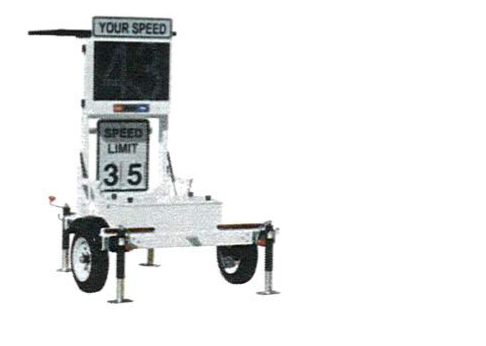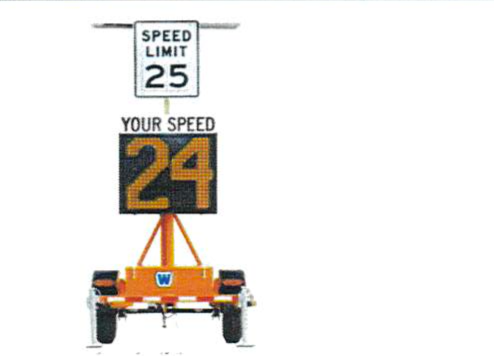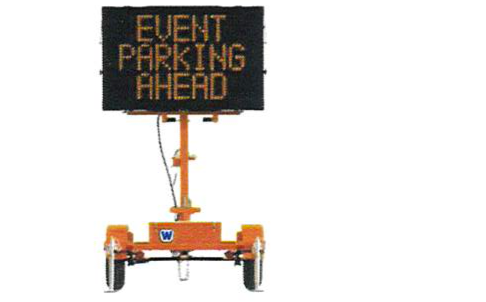Speeding is always a problem
"There's no point in making a decision right now," Selectboard member Li Shen said. "We don't have any budget [for signs]."

Accordinging to history.com, in 1652, the colony of New Amsterdam (present-day New York) issued a decree: “[N]o wagons, carts or sleighs shall be run, rode or driven at a gallop” at the risk of incurring a fine starting at two pounds Flemish.
In 1901, Connecticut became the first state to pass a law regulating motor vehicles, limiting speeds to 12 mph in cities and 15 mph on country roads. The law included language that required drivers to slow down or stop when approaching or passing horse-drawn vehicles to avoid scaring the animals.
In 1974, President Nixon signed a national speed limit of 55 mph into law, which dramatically reduced traffic fatalities across the country. The national speed limit was later raised to 65 mph, and then repealed completely at the federal level in 1995.
In 2006, complaints about speeding on Tucker Hill Road in Thetford Center led to the installation of stop signs on either end of the Sayre covered bridge. Dean Whitlock explained the concern in a listserv post that summer:
“For the past two-and-a-half years, I have been walking to work across the bridge almost every weekday. My wife joins me on many days. Several of our neighbors on Tucker Hill Road also walk across the bridge frequently. All of us have had very close calls with vehicles crossing the bridge. In every case, the near accident was the result of our not being visible to the driver until the last minute (if at all), and in every case, the vehicle was traveling much faster than the speed limit. The posted speed limit on that stretch of Tucker Hill Road (from 113 to the top of the hill by the Milk House) is 25 MPH. The posted speed limit on the bridge at the time was 10 MPH. Very few people slowed down to 10 or even to 25. I myself used to slow down to what I thought was a safe speed. When I checked my speedometer, I was going about 33. So I must assume that most people thought they were going a safe speed, and that many, like me, were going by instinct. To a pedestrian, 33 feels really fast.”
A list of ideas was presented at the time, from bridge lights to speed bumps to the construction of an independent pedestrian bridge, but stop signs – for their low cost and ease of installation and maintenance – were implemented.
Some of the residents on Tucker Hill Road remained unsatisfied. Sharon Harkay, whose house abuts the bridge, wrote on the listserv a few months later that, "The difference in the number of vehicles and the number of speeding, inconsiderate drivers of vehicles [since she moved to Thetford] is truly amazing."
Years later in 2013, Harkay complained to the Selectboard that speeding, inconsiderate drivers were still an issue by her house. Selectboard minutes from August 26th, 2013, read:
“[Chief] Lanctot and the Selectboard briefly discussed the problems with people rolling through the stop sign at the Tucker Hill covered bridge and speeding in that area. Lanctot noted that he will add some extra patrolling in the area but noted that it is a difficult area in which to leverage patrolling to change the behavior of speeders.”
Tucker Hill Road isn't the only problem area. In 2014, when the Selectboard was discussing the Thetford Hill Pedestrian Project, speed limit and radar (driver feedback) signs were discussed, as were crosswalks for the school—all to lower traffic speeds on Route 113. On Library Lane, narrowing the road and adding a fence or curb and No Parking signs was discussed in an effort to calm traffic around the Thetford Hill Green.
At the same meeting, there was a resident request to lower the speed limit on Cross Street. A few years later, in 2016, a resident complained to the Selectboard about speeding on Route 113 in Post Mills. And in 2018, there was a complaint on the listserv about speeding on Stevens Road: "... I'm a little bit weary of watching traffic blast past... It's chronic." in 2019, the Selectboard received complaints about speeding in Union Village.
In 2020, concerns about Tucker Hill Road and the Sayre covered bridge reemerged. Harkay, now a member of the Selectboard, wrote in August of 2020 that, "Speeding on Tucker Hill Road in the neighborhood area and rushing through the covered bridge continue to be a huge problem."
Since becoming Selectboard Chair, Harkay has placed speeding-related issues on the Selectboard agenda three times. The most recent discussion, at the July 12th, 2021, Selectboard meeting, included input from Chief Evans:
“Speeding compaints pop up all over town... right now we have five or six active speeding motor vehicle complaints that we try to focus on periodically throughout the day... if we just took a 12 hour period of the day from 7am to 7pm, you know, that's 84 hours [a week]. Even if we can hit that once for an hour once a week at each of those various [locations], once or a couple of times a day, we're not really effective at having a constant presence even with a genuine effort to do that.”
Included in the meeting packet were cost estimates for four types of driver feedback signs, varying in price and, according to Chief Evans, each having different advantages. On the low end are pole-mounted radar signs such as the one currently installed on Route 113 as you come into Thetford Hill from the interstate.

A pair of these signs costs $6,700. Their greatest flaw is that they cannot differentiate between objects that are bunched together, such as two cars coming up Thetford Hill at the same time. The drivers will still receive feedback, but the data collected by the sign will under-report the volume of traffic on that road. Such data could be used at a higher level to inform future road and transporation planning. While data is not the objective of traffic-calming devices, it could be a useful add-on.
Next in cost is a trailer-mounted radar sign. The advantage to this sign is that it can be relocated as needed. The price tag is $10,900.

The disadvantage is the same as for the pole-mounted sign: data collection could be lacking. This issue is resolved in the next option up, at $11,750. Also trailer-mounted, this model has multi-directional radars that allow the device to accurately count the number of passing vehicles. According to Chief Evans, it can also count their approximate size—for example: X number of passenger cars passed by and Y number of trucks.

The most expensive option comes in at $19,250. It's a combination radar/data and variable message board, which means that when it's not being used to provide driver feedback, it could be stationed outside Town Hall to inform residents of relevant information, such as upcoming tax due dates or information about Town Meeting. Like all the other devices, it is powered by solar, but there's an available larger solar panel and battery bank that ensures constant operation.

Are driver feedback signs effective at calming traffic? They can be, at least in calming the average speed of traffic. Studies show that driver feedback signs reduce the 85th percentile speed – the speed at which 85% of motorists drive or below. In Shelburne, Vermont, a study found average speed reductions of 3-8 mph.
It's important to highlight that the effect is on the average speed of traffic. It means that most motorists will drive slower when approaching a driver feedback sign, but not all.
"If you want to speed by [the sign] and ignore what it's telling you, people are going to do that. Some drivers, they don't care, and they're going to speed past the sign. Most conscientious folks look at the sign and they say, 'Oh my goodness, I didn't realize I was going that fast,'" Chief Evans said in the July 12th, 2021 Selectboard meeting.
So driver feedback signs would calm traffic, but not all traffic. In addition, they're only effective for a limited distance. As soon as motorists pass the sign, speeds tend to gradually increase again.
Yet a plan by Chief Evans—"what would be ideal”— is to purchase a pair for each village over the next few years. At $6,700 a pair, one could buy four pole-mounted signs for not much more than the cost of one trailer-mounted sign. In a few years, one could have driver feedback signs at the entrance to all five of Thetford's villages.
However, Harkay pointed out, "In most of our five villages, we don't have just a single road, but in many cases we have two roads... like here in Thetford Center... we also have a wicked problem on Tucker Hill. So one pair for Thetford Center wouldn't be enough."
If the goal is to reduce speeds on just Sayre bridge – for pedestrian safety crossing the brdige – a pair of signs might work. The study in Shelburne concluded that the calming effect of the driver feedback signs, albeit limited to the sign's vicinity, reduced the potential for severe injury to pedestrians and the average risk of fatality by about 25%. This is because the risk of injury or fatality increases exponentially with vehicle speed. The average risk of death for a pedestrian is 10% at an impact speed of 23 mph and 25% at 32 mph.
There are other methods for calming traffic, such as speed bumps or tables. They also have a limited effect: drivers slow down just prior to the bump/table and accelerate again after. Some have argued that they would interfere with plowing or drainage, and might change the character of the historic covered brdige. Other methods include "road dieting," which is the intentional narrowing of travel lanes. While effective, road dieting has an expensive upfront cost – roads typically have to be re-engineered. And technically, the one-lane covered bridge is a road diet. Traffic is already obligated to slow down because of the reduction from two travel lanes to one. It just may not be slow enough for some residents.
Temporary or potential road obstructions such as on-street parking, pedestrians, and cyclists—in contrast to permanent, engineered diets like a one-lane bridge or curbs—also have a traffic calming effect. People slow down when there's something in the road, or they anticipate that there might be something in the road. Long-time residents may learn to expect such obstacles on a stretch of road that winds through a neighborhood, but drivers unfamiliar with the area might not. That's where signage alerting drivers to the potential for pedestrians or cyclists comes in handy. Yet, while the Town was awarded a grant to increase signage and road markings to warn drivers about the potential of cyclists on Tucker Hill and other roads, a majority of the Selectboard has expressed the desire to return the grant and not implement the solution.
"There's no point in making a decision right now," Selectboard member Li Shen said at the end of the discussion. "We don't have any budget [for signs]."
